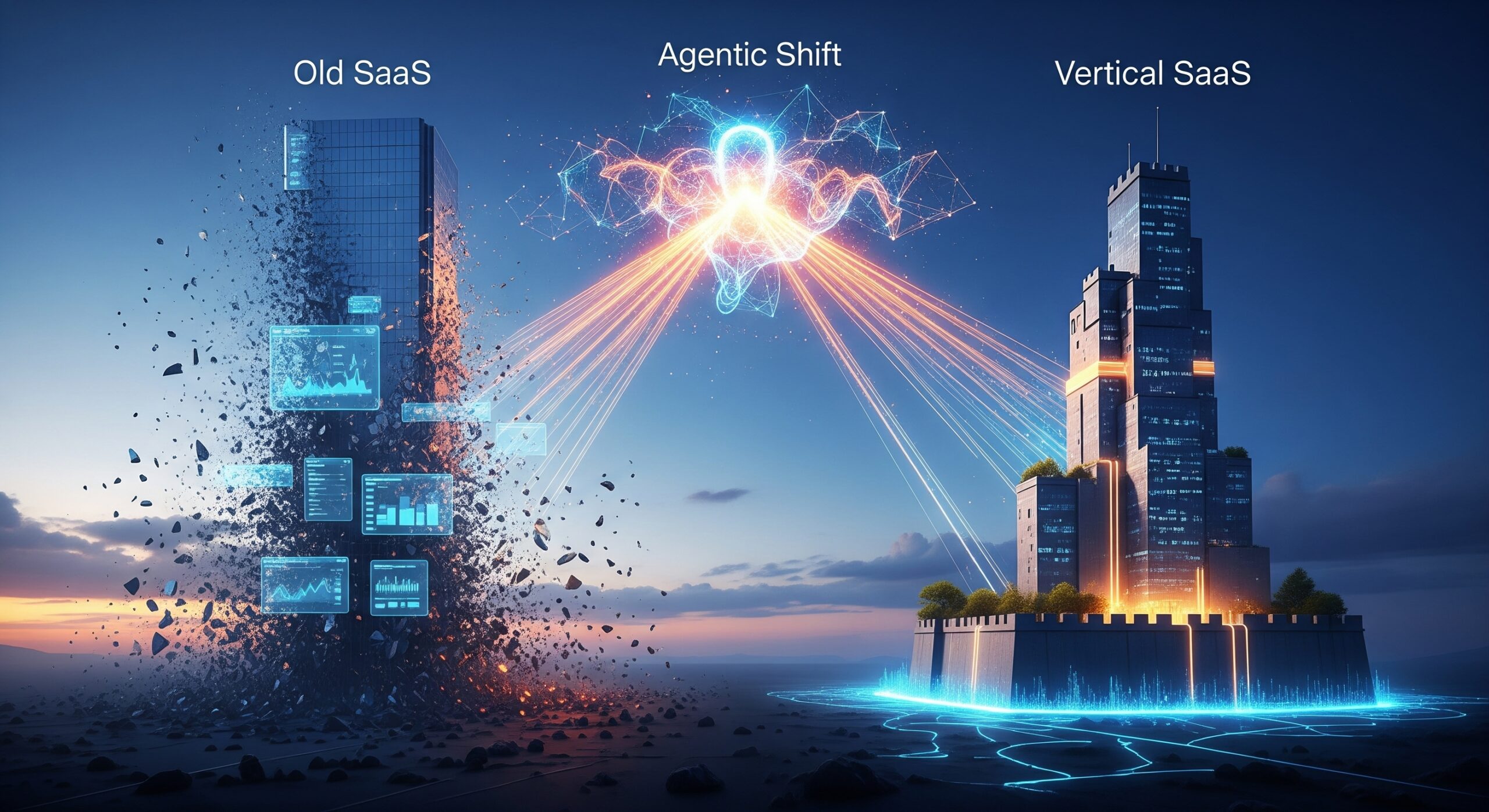The State of SaaS Disruption (2025): A Leader’s Guide to the AI-Native Era

For two decades, the Software-as-a-Service model has been the engine of enterprise innovation. That era of predictable, feature-driven growth is now facing a reckoning. The SaaS world we knew—built on per-seat licenses and the UI as the primary moat—is being fundamentally re-architected by a technological tsunami: Artificial Intelligence. This is not about adding a “smart” feature; it is about a holistic re-evaluation of your business model, go-to-market strategy, and true defensibility.
This is your unified playbook for navigating the AI-Native Era.
The Two Waves of AI Disruption
The AI Tsunami is hitting in two distinct waves. The first is evolutionary; the second is revolutionary.
Wave 1: Generative AI – The Feature Accelerator
This is the wave we are all feeling now. GenAI is being integrated into existing products to enhance functionality. While powerful, this wave primarily accelerates the old game. Adding GenAI features is now table stakes—a race that requires you to run faster just to stay in the same place.
Wave 2: Agentic AI – The Interface Unbundler
This is the paradigm shift. Agentic AI moves software from a passive tool towards an autonomous colleague that executes complex tasks. An AI Agent understands a goal, creates a plan, and executes it. Instead of asking an application to show you data, you command an agent to analyze it and achieve an outcome. This new benchmark of intelligence threatens to make the traditional UI irrelevant.
The “No UI” Future and the Great Bifurcation
The agentic shift threatens to unbundle the user experience from the application itself, creating a new “AI tier” in the software stack. In this “headless” future, your product’s value may be reduced to its API, eroding brand loyalty and pricing power. This forces a critical question: If my UI disappeared tomorrow, what unique value would remain? The business model itself must evolve from selling a tool (SaaS) to selling a guaranteed outcome, a model we call Agent-as-a-Service (AaaS).
This shift will not impact all companies equally; it is creating a great bifurcation in the market.
- The Vulnerable: Undifferentiated horizontal tools, products reliant on manual data entry, and “thin wrappers” around third-party AI models are on a collision course with obsolescence.
- The Resilient: Vertical Market Software (VMS) is uniquely positioned to thrive. Deep domain expertise, high-trust relationships, and, most importantly, unbeatable data moats from proprietary industry data create a powerful, defensible fortress.
New Playbooks for a New Battlefield
Navigating this era requires different strategies for different players.
- For Investors: The game has changed from evaluating growth metrics to assessing moat durability. The central question is no longer “Is this a good business?” but “Does this business have a right to exist in a world where AI can do its job?” Scrutinize the data moat above all else and learn to distinguish genuine “AI-Native” solutions from superficial “AI-Washing.”
- For Challengers: Your lack of legacy is your greatest asset. In a disruptive market, speed beats scale. Your playbook is to embrace this asymmetric advantage: solve a specific niche problem 10x better with AI and attack the overpriced, underserved cash cows of legacy incumbents.
- For Incumbents: Your battleship is powerful but hard to turn. Survival demands a courageous, four-part strategy: Fortify your base by doubling down on niche expertise; Modernize with purpose by using the “Strangler Fig” pattern instead of a full rewrite; Integrate, don’t invent by choosing a strategic AI partner; and Evolve your business model by experimenting with value-based pricing now.
Conclusion: The Choice Before Us
The SaaS industry is at an inflection point. The moats of the past—a slicker UI, a longer feature list—are eroding, being replaced by the durable defenses of proprietary data and deep workflow integration. This is not the end of SaaS, but it is the end of SaaS as we knew it. The future belongs to those who can master the symbiosis of deep domain expertise and intelligent, autonomous execution. The AI Tsunami is here. You can either learn to ride the wave or risk being swept away.
(this post is a summary of my 6 part series)